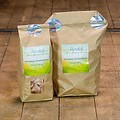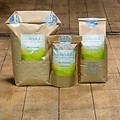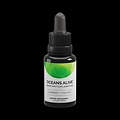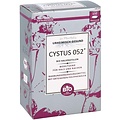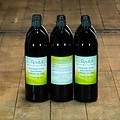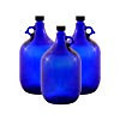Food Sources with Magnesium
Food resources from nature
As we have already mentioned, green leafy vegetables, seeds, nuts and whole grains are quite good sources of magnesium, provided that agricultural land is well mineralized. Certain wild plants are truly notable, such as stinging nettles (860 mg per 100 grams) and murik (529 mg per 100 grams), adding many tonic and nutritious benefits to both human and animal feed diets, largely because of their high mineral content.
Seaweed, the ancient ocean dwellers, contain spectacular levels such as most sea vegetables. Consider that they live continuously in the water, of which the third is most abundant mineral magnesium. And authentic, unrefined sea salt is a very good source of magnesium, along with trace minerals. The use of leg bouillons on a daily basis will be another excellent source of minerals, including magnesium, in a highly usable form. However, there is one major stumbling block: the extreme pollution of ocean water.
Magnesium content of our beloved milk
In general, milk is not a rich source of magnesium, but many cultures have seen dairy products over the years as the basis for a balanced, healthy diet, which gave strength and vitality.
Weston Price, for example, explored residents of the Swiss Alps as well as the African Massai, whose strong, disease-resistant individuals had little or no tooth decay. But are these diets representative and do they have the same healthy properties as those on which we depend: the contemporary industrialised food model?
The mineral composition of milk depends on many factors, including the breed of the animal, stage of lactation, regularity of milking, environmental conditions, type of pasture, soil composition and soil contamination. Meadetany, for example, is a serious and potentially lethal condition for cattle characterized by extremely low levels of serum-magnesium.
Also known as' grass cloths' or' wheat-weathering poisoning' is the result of animals grazing on high-growth young grass in spring or autumn on land, which is very low in magnesium, which can happen when the meadows with high concentrations of nitrogen and potassium fertilisers are fertilised. In case of acute intoxication, the animal can be rescued by injections of magnesium sulphate; but subclinical magnesium deficiency in the herd can remain undetected.
Meadows, which offer a large plant diversity of grazing animals, also have diversity to offer soil cology and nourishing diversity to the ruminant. In a Swiss study, in which thirty species of plants were studied on alpine pastures, the researchers discovered that "the botanical composition of an alpine pasture has a major influence on the nutritional value of animal feed.
Compared to various grasses, the legumes and herbs showed a lower content of cell walls but a higher level of raw protein, as well as four times the calcium and twice the magnesium content. Dr. Price visited the Swiss, who had their cattle grazed on alpine slopes, which was littered with numerous plant species and soaked in the mineral-rich icy water, which the villagers also used for drinking and cooking.
Numerous mental tensions can demand their food toll on the dairy animal and therefore on the quality of its milk. Overpopulation, disability, dirt and unnatural feed immediately increase as obvious causes, but too often milking - more than once a day - can result in dilution of food in the milk. Daily exports are larger, but foodstuffs are less in volume.
According to a new analysis of government archives,"The mineral content of milk, popular meat and the chemical composition of daily food has fallen sharply over the last 60 years", so begins an article in the Guardian on the comparison of food tables of 1940 and 2002 by researcher David Thomas.
The survey was carried out for the UK consumer group, the Food Commission, and was published in their quarterly magazine, The Food Magazine. Mineral declines in dairy products show that in that period milk has lost 60% of its iron, 2% of its calcium and 21% of its magnesium. Compared to 1940, the current "most cheeses show a decrease in magnesium and calcium levels. According to the analysis, cheddar today provides 9 percent less calcium, 38 percent less magnesium and 47 percent less iron, while parmesan cheese shows the steepest decline in foods, with 70% decrease in magnesium levels".
Ignoring the declining magnesium content in foods, such as dairy products, may have misled some diagnoses in large parts of the population. Proponents of anti-animal fat tend to attribute the unbridled incidence of heart disease among the Finns by their high intake of dairy products.
However, according to Dr. Mildred Seelig, of the New York University Medical Center,"In Finland, which has a very high mortality rate for IHD, there is a clear relationship between heart disease and the amount of magnesium in the soil. In eastern and northern Finland, where the magnesium content in the soil is about one third of that in south-west Finland, the mortality rate of ischemic heart disease is twice as high as that in the south-west. Ho and Khun investigated factors that could contribute to both the increasing incidence of cardiovascular disease in Europe, and the decreasing levels of magnesium, both in the soil and in the food supply. They claimed that in Finland, which has the highest cardiovascular mortality rate in Europe, in 1963, the provision of magnesium for diets was reduced to a third in 1963, compared to the normal intake in 1911.
Modern urban, urban Finns naturally consume pasteurised dairy products, which first of all, thanks to modern agricultural practices, not only have reduced magnesium levels, but also have less soluble calcium as a result of denaturing during the pasteurization of the enzyme phosphatase. Calcium, which is not soluble, refers to soft tissue, such as the vascular system, and can contribute to a cascade of "ominous events" related to heart disease.
After these observations, we may therefore suspect that dairy products must be produced, with due regard for, not only the animal itself, but also the soil of the pasture land that' feeds' it. When all foods are balanced, we can expect that the food has the strength to really feed us.
The countless stress factors in contemporary life increase the body's demand for magnesium - through our metabolic systems, through environmental poisoning, which must be neutralised, through abundantly refined carbohydrates in our diets, to name but a few.
The balance of foods, which are provided in the food of the groups that addressed Dr. Price, was also in good balance with the physical, emotional and social ecology of those people. We can only strive to achieve and maintain that balance in the ecology in which we live, both as consumers and producers of food.
Food sources with magnesium
|
Product/Plant/Fruit
100 grams
|
mg
|
Product/Plant/Fruit
100 grams
|
mg
|
Product/Plant/Fruit
100 grams
|
mg
|
|
Seaweed
|
760
|
Pecan nuts
|
142
|
Beets
|
25
|
|
Wheat bran
|
490
|
Walnut
|
131
|
Broccoli
|
24
|
|
Wheat germs
|
336
|
Rye
|
115
|
Cauliflower |
24
|
|
Almonds
|
270
|
Tofu enhanced with Mg nigiri
|
111
|
Carrot
|
23
|
|
Cashew nuts
|
267
|
Coconut meat, dried
|
90
|
Sellery
|
22
|
|
Rummelasse
|
258
|
Kale
|
57
|
Beef and Veal
|
21
|
|
Food yeast
|
231
|
Shrimps
|
51
|
Asparagus |
20
|
|
Buckwheat
|
229
|
Corn |
48
|
Chicken
|
19
|
|
Paran nuts
|
225
|
Avocado
|
45
|
Green pepper
|
18
|
|
Dulse
|
220
|
Cheddar cheese
|
45
|
Winter pumpkin
|
17
|
|
Hazelnuts
|
184
|
Parsley
|
41
|
Cantaloupe
|
16
|
|
Peanuts
|
175
|
Prunes
|
40
|
Eggplant
|
16
|
| Barley |
162
|
Sunflower seeds
|
38
|
Tomato
|
14
|
|
Whole wheat
|
160
|
Sweet potato
|
31
|
Milk
|
13
|
Main page | Previous Page: What are the Functions of Magnesium? | Next Page: Magnesium-Supplements










